Designed for all government organizations, government CRM software enables organizations’ digital transformations that promote a rapid and revolutionized citizen experience. CRM software for the government-industry results in increased citizen satisfaction because of faster access to services. The other benefits of CRM software are a simplified communication process, improved day-to-day operations, unmatched security, accurate analytical reporting, and a customized dashboard. The CRM for the government or public sector benefits the government by meeting the increased expectations of the customers, elected representatives, bureaucrats, and government agencies. It also enables them to devise strategies and improve the user experience. Automation is part of CRM software, so government employees can eliminate repetitive tasks and focus on significant projects. It would also help the government reduce costs and increase efficiency, helping the workers fill their responsibilities better. Are you unsure of the best CRM software? Surf the list of top CRM solutions for the public sector today!
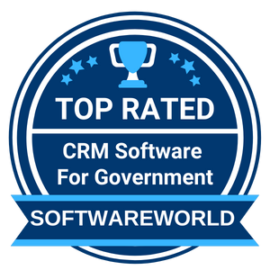
What are the Best CRM Software for Government Agencies 2023?
» Our score is based on user satisfaction (reviews & ratings), social media buzz, online presence, and other relevant information. If your software is part of this list, use this badge on your website and social media to let your readers know about your success.
List of Top CRM Software for Government Agencies & Public Sector Reviews
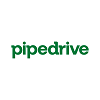
1. Pipedrive – Best CRM software for government
About Pipedrive: Pipedrive is the best CRM software for any sized business. With a clear dashboard, easy-to-use features, and an expansive library of integrations with other apps, it’s the perfect CRM for anyone who wants to be more productive with their business strategies. Pipedrive provides the easiest way to manage your business and customer relationships. With its intuitive interface, advanced filtering tools, and powerful reporting capabilities, this CRM eliminates a lot of the hassles that come with keeping up with current opportunities. Read Our Detailed review of Pipedrive CRM Software
Pipedrive Features: Secure Database, Centralized Information, Contact Management, Account Management, Interaction Tracking, Multi-Organizational Case Management, Omnichannel Communication, Project Collaboration, Employee Database, Workflow Automation, Document Management, Knowledge Management, Customer Support
“Using Pipedrive’s CRM is one of the best decisions we’ve ever made. We’ve seen our annual revenue explode, and the outlook just keeps getting sunnier” – Mitchell Workman
Pipedrive
United Kingdom
501 – 1000
2010
$14.90/month/user
Yes
4.5 
2480+ Reviews
4.2 
1570+ Reviews
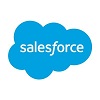
2. Salesforce CRM – Modernize government service with the best Government CRM
About Salesforce CRM: Salesforce CRM is a software company that offers cloud-based customer relationship management solutions for small, medium and large businesses. Salesforce CRM manages the company’s relationships with current customers as well as potential customers and partners. Salesforce offers a range of features including phone, email, chat, social media monitoring and enterprise content management. The solution is available in numerous languages and offers thousands of plugins, including those that extend the system’s functionality beyond basic CRM to business analytics, email management and marketing.
Salesforce CRM Features: Secure Database, Centralized Information, Contact Management, Account Management, Interaction Tracking, Multi-Organizational Case Management, Omnichannel Communication, Project Collaboration, Employee Database, Workflow Automation, Document Management, Knowledge Management, Customer Support
“With Salesforce, we’re building a unified information source to help us reimagine collaboration across our entire platform. This will enable NBCUniversal to continue delivering the highest level of transparency, insights, and results for our customers.” – Linda Yaccarino
Salesforce
United States
10000+
2003
Not provided by vendor
Yes
4.4 
17000+ Reviews
4.3 
12000+ Reviews
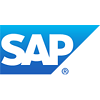
3. SAP CRM – Popular CRM software for government
About SAP CRM: SAP allows all types of companies to integrate their product and service offerings, streamline back-office operations, and provide a better customer experience. SAP CRM offers many benefits for businesses such as increased productivity. SAP CRM is a software package that consists of tools and applications resulting in an integrated suite of solutions to allow businesses to manage their customers, contacts and sales activity. The package consists of the SAP Customer Relationship Management (CRM) module, the SAP Sales Enablement (SE) module, and the SAP Enterprise Performance Management (EM) module.
SAP CRM Features: Secure Database, Centralized Information, Contact Management, Account Management, Interaction Tracking, Multi-Organizational Case Management, Omnichannel Communication, Project Collaboration, Employee Database, Workflow Automation, Document Management, Knowledge Management, Customer Support
“We have to do business the way our customers want to do business – not the way we want them to. SAP solutions help us live up to the modern customer’s expectations of an innovative name like Kodak.” – Jim Continenza
SAP
United States
10000+
1999
$58.00 /month /user
Yes
4.2 
200+ Reviews
3.9 
400+ Reviews
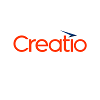
4. Creatio CRM – CRM solution to build people-centric relations with citizens
About Creatio CRM: Creatio CRM is a cloud-based customer relationship management software for small businesses. This program allows users to manage their business and customer relations using their private domain. It uses an intuitive, easy-to-use interface which makes it easy for new users to learn how to use the platform without difficulty. Being made available on a monthly subscription basis, this software is accessible at any time, whether you’re at work or home. For those who are equally interested in using the system daily, there are also several add-ons that can be purchased that offer paid features such as phone support and more features.
Creatio CRM Features: Secure Database, Centralized Information, Contact Management, Account Management, Interaction Tracking, Multi-Organizational Case Management, Omnichannel Communication, Project Collaboration, Employee Database, Workflow Automation, Document Management, Knowledge Management, Customer Support
“With Creatio, we consolidated all customer data, tuned lead and opportunity management using business rule capabilities, and streamlined the sales process.” – Jana Sergejenko
Creatio
United States
501 – 1000
2002
$25.00 /month
Yes
4.8 
80+ Reviews
4.6 
200+ Reviews

5. SugarCRM – Modernize the Public Sector with a Modern CRM
About SugarCRM: SugarCRM systems are available as a web-based application, on-premise solution or a cloud-based service. SugarCRM’s value comes from the combination of technology and personas that allow an organization to grow with their business processes. It provides organizations with all the tools they need to help them create, analyze and take action on customer data. It is open-source software that can help your organization effectively manage online and offline sales, marketing, customer service, social media interaction with customers, fulfillment, and service. It also helps in managing your staff as it can help you offer better benefits and rewards, automate tasks and automate communication with customers.
SugarCRM Features: Secure Database, Centralized Information, Contact Management, Account Management, Interaction Tracking, Multi-Organizational Case Management, Omnichannel Communication, Project Collaboration, Employee Database, Workflow Automation, Document Management, Knowledge Management, Customer Support
“Sugar allowed us to not only increase the number of accounts we were keeping track of, but also to maximize the amount of opportunities we go through.” – Trevor M.
SugarCRM
United States
501 – 1000
2004
$49.00 /month /user
No
3.8 
370+ Reviews
3.8 
640+ Reviews
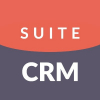
6. SuiteCRM – The Perfect CRM for the Public Sector
About SuiteCRM: The perfect CRM software for the government or the public sector. This is highly customizable software that easily gets integrated into the existing application with the help of a powerful API. Transformation of engagements, efficient management of cases, and staying compliant are the features that make it apt for public enterprises. Its focuses on delivering freedom, innovation, and quality to its customers.
SuiteCRM Features: Secure Database, Centralized Information, Contact Management, Account Management, Interaction Tracking, Multi-Organizational Case Management, Omnichannel Communication, Project Collaboration, Employee Database, Workflow Automation, Document Management, Knowledge Management, Customer Support
“As we have rolled out SuiteCRM with SalesAgility’s guidance and support we have seen a significant level of engagement from our staff. Key people within our organization are using SuiteCRM to drive new marketing and sales initiatives plus enhancing support processes that are generating an order of magnitude in savings in
operational costs.” – Jeff Christensen
SalesAgility
United Kingdom
11 – 50
2005
Not provided by vendor
Yes
4.3 
40+ Reviews
4.2 
80+ Reviews

7. Maximizer CRM – Manage Local Government with Maximizer CRM
About Maximizer CRM: Maximizer CRM is a cloud-based software solution ideal for businesses seeking to improve customer service and increase revenue. Maximizer CRM lets organizations focus on what they do best – delivering outstanding value to customers – by integrating their business and sales processes with a single platform. Maximizer CRM offers enhanced collaboration, seamless integrations with other applications, live data updates through the cloud, mobile device integration, predictive analytics from contextual insights, and more.
Maximizer CRM Features: Secure Database, Centralized Information, Contact Management, Account Management, Interaction Tracking, Multi-Organizational Case Management, Omnichannel Communication, Project Collaboration, Employee Database, Workflow Automation, Document Management, Knowledge Management, Customer Support
“Maximizer is the sales and operations backbone of our company that’s enabling us to provide a seamless experience to our clients throughout each of their life stages.” – Matt Welykholowa
Maximizer Software
Canada
51 – 200
1988
$29.00 /month
Yes
4.0 
320+ Reviews
3.9 
430+ Reviews
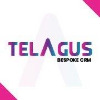
8. Telagus – Best CRM Software for Government Industry
About Telagus: Telagus helps you contact your customers directly through their phone numbers and email addresses, as well as manage marketing campaigns with built-in tools like email marketing templates and landing pages. Telagus CRM also offers integrations with online tools like Google Analytics so you can measure success by checking where your leads came from. It Integrates with your existing systems such as Salesforce and Google Analytics to maximize your efficiency and team collaboration. It builds effective email campaigns with built-in templates, form tracking, and customizable signup forms.
Telagus Features: Secure Database, Centralized Information, Contact Management, Account Management, Interaction Tracking, Multi-Organizational Case Management, Omnichannel Communication, Project Collaboration, Employee Database, Workflow Automation, Document Management, Knowledge Management, Customer Support
“The degree of automation and control it gives in data management, project management and complex workflow is what makes Telagus a very powerful tool” – Farjad M.
Telsa Media
United Kingdom
11 – 50
2015
$50.00/month
Yes
0.0 
00 Reviews
2.5 
01 Reviews
Government CRM Software Buyer’s Guide
» What is Government CRM software?
CRM software is business management software that tracks customer interactions with a company. These interactions are followed to help manage customer relationships. CRM for the government sector will likely focus on public employees and their interactions with the citizens they serve. It could also include citizen-public employee interactions like submitting a complaint or commenting on a survey. It's important to note that CRM consists of any activity related to "customers," whether they're customers or not.
Some people may associate CRM with social media software used to create fan sites and marketing campaigns. However, in most cases, the software provides features beneficial for public sector organizations and governments, which are usually cost-sensitive. The type of public sector CRM software could range from tracking citizen feedback to feedback on the citizens' behavior, tracking citizen grievances, or even providing citizen-based charity options. In other words, the purpose of this guide is to explain the benefits and drawbacks of government CRM software applications.
Government CRM software can be defined as a set of tools (usually Web-based) that provide features beneficial for managing citizens’ interactions with government agencies. Today, private companies use CRM more often than government agencies and public sector organizations. But this can change, and there are some excellent reasons why the public sector would want to use CRM, including improved service to customers and residents. Government CRM software helps government agencies track citizens’ interactions to help manage citizen relationships. For example, it can track citizens' telephone calls or emails. It enables an organization to capture critical customer data and make it available for marketing purposes.
» Why does the Government sector need CRM software?
Most industries are in the process of understanding that CRM is no longer just a tool for sales but also for customer service. The government sector is no longer exempt from this rule. More and more government organizations are using government CRM software to understand their customers/clients better and identify and solve problems that could arise. Whether it's a school district using software to track students, or a city using it to maintain its budget, CRM software is an essential tool in government.
Comprehensive customer relationship management software has become the weapon of choice for all organizations, whether profit or non-profit. In government, however, the emphasis is on the "customer." Today many government agencies have an internal customer that they need to satisfy. These agencies include welfare, unemployment, and other social services departments. Other agencies have external customers paying them for services rendered, such as utility companies and pension providers. The needs of these diverse customers vary enormously, but in each case, there are common factors government CRM software should be able to address if implemented correctly.
» Benefits of CRM software for the Public Sector
Government CRM software can increase the efficiency and effectiveness of customer service. It improves access to data that can help identify trends, support staff performance management, etc. CRM software for government benefits by encouraging collaboration between otherwise siloed people and helps with planning based on current needs. It also provides a central point for employees to find information about customers, which can help with more efficient communication.
1. Promotes Transparency:
CRM software for the public sector helps ensure that all relevant information is available to everyone, not just those who are part of a specific service line or department. This helps streamline processes and reduce redundancy, meaning that employees can get their jobs done more quickly and efficiently. It also helps with transparency by providing information about individual customers for the benefit of both sides. Employees have visibility into each customer's situation and needs, while customers can have their concerns addressed effectively.
2. Supports Collaboration:
CRM for local government services promotes easy communication between individuals and departments in a government agency by providing one centralized location where all related customer data can be stored and accessed. This allows employees to work together more efficiently and effectively, improving the quality of service they deliver. For example, putting customers' details in a central system means that different departments can find and access this information more easily and quickly. If a customer files a complaint with one department, but another should respond based on their data, the other department would not have access to the correct information without government CRM software.
3. Improves Customer Service Levels:
The most important benefit of CRM software for public sector organizations is that it helps improve customer service levels. This is done directly by providing employees with easy access to information about individual customers to meet their needs better. Suppose someone is experiencing a problem with their telephone service, for example. In that case, other members of the staff team can quickly find out about that customer's history, allowing them to respond more effectively and efficiently.
CRM software for public sector organizations differs from online tracking systems in terms of purpose. Online tracking devices are used to track citizens within a public service to monitor working performance and identify any areas of weakness. For example, the monitoring system used by Centrelink is designed to provide feedback on employees' performance and identify areas where they could improve their customer service levels.
4. Cost-Effective:
CRM software for the public sector is cost-effective in allowing government agencies to benefit from the information in their database. This means they can respond more effectively, getting things done more quickly and efficiently. In addition, it makes future planning easier by helping to identify an existing need and providing a central point to collate information, enhancing responsiveness when changes are made to an organization's services or areas of concern arise.
5. Improved Taxation:
CRM software for the public sector also helps to improve taxation by giving government agencies the ability to respond more effectively, decreasing staff turnover and increasing job satisfaction. This reduces spending on recruitment and training and enhances the quality of work delivered while also making the most of existing resources. Aggregating customer data in one central location helps agencies respond more quickly to unforeseen events, such as natural disasters or climate changes that could affect a particular area or area. It also makes it easier to identify trends and respond accordingly.
6. Easy Dispute Resolution:
CRM software for the public sector helps reduce the number of disputes that government agencies need to deal with by preventing them from arising in the first place. The underlying cause of many conflicts is a breakdown in communication between individuals and departments within an agency, typically due to difficulties accessing information. Providing employees with access to the information they need to understand and respond to individual customers' needs helps prevent disputes from occurring, resulting in improved efficiency. Government CRM software also makes it possible for different departments to communicate with each other more efficiently instead of working as isolated units. This helps reduce bureaucracy and paperwork, resulting in an overall improvement in customer service levels.
» Features of CRM software for the Public Sector
Public sector organizations are different from private companies due to the nature of their work. This guide will discuss features of CRM software for public sector organizations. CRM software for public sector organizations needs an entirely secure and robust system that can withstand attacks from cybercriminals or hackers. To ensure the complete confidentiality and security of all customer data, this system must be resilient to outside intrusions or regular hacks by external parties and employees. These features include:
1. Fund Management:
Private sector organizations rely on their fund management software to help them track where their funds are. The software can be used in the public sector differently. The public sector, for example, might want to track where the funds for specific projects or programs are coming from. It is essential that every government entity accurately tracks its resources because allocating the budget is a huge task.
2. Social Media Automation:
Social media platforms like Twitter and Facebook are essential resources for public sector organizations. Social media accounts can spread the news and update the public on any issues their services cover. They must be able to automate these social media accounts to update the information without much effort regularly.
3. Digital Content Management:
The digital content management software will allow all government agencies to store, manage and control all their digital information in one centralized place. This will make updating content more accessible than ever, just like private sector companies do today with their CRM systems.
4. Helpdesk:
All government entities will have a help desk to handle customer-related issues or questions. Customers can monitor the help desk so they will have easy access to all the information. This system is also used in private-sector companies and is an excellent addition to CRM for government agencies.
5. Budget Management:
Government entities spend a lot of money on budgeting, planning, and forecasting every year. They need a budgeting system that can easily track how much is being paid to allow them to plan for future expenses better than before.
6. Automated Workflow:
Almost all government entities have to deal with a lot of paperwork. The automated workflow system will allow them to process this paperwork quicker and easier. Automating the workflow will make it easier for staff members to do a better job and ensure that all documents get processed faster than before.
7. Employee Performance Tracking:
The employee performance tracking feature will allow public sector organizations to track and analyze employee performance at every level of their organization. This information will enable public sector organizations to manage better and plan their staff members while also giving them an essential insight into how each employee interacts with others at work or in their department.
8. Self-Service:
Working as a government entity can be very stressful, especially for those in the customer service department. The self-service system will allow public sector organizations to easily register into the system and perform most of their tasks through their smartphones. This will make it easier for them to issue new licenses, renew old ones, or access other important information they need at any given time.
» How much does Government CRM software Cost?
This question is hard to answer because it all depends on the number of users in your organization. If you have a company the size of a small-to-medium-sized business, then you can expect to spend about $50-$30,00 for this project. On the other hand, if you have an enterprise-size government agency with over 1,000 users, expect to pay more than $50,000. This also depends on the number of features a CRM for government agencies will have. The best CRM for government agencies should have all the features mentioned above to be highly productive.
» How do I Choose CRM software for the Government Agency?
Choosing CRM software for government industry is not as simple as selecting CRM software for private sector companies. Due to many factors that must be considered before making your final decision. Some of these factors include:
1. User Types:
This is the most important category to consider when selecting CRM software for government industry. The organization will depend on how many users they have in their system. If you have more employees and vendors, you will need a more complex system that will allow you to manage all of your users and vendors. On the other hand, if your organization is relatively small and straightforward, it would be best to select a simple government CRM software that you can use freely without spending too much time.
2. Ease Of Use:
The ease of use of government CRM software must be a top priority when choosing it. The software must be easy to use and learn for all the users in your organization so they can start using it quickly. It is also essential that the local government CRM software is not just easy to use but also reliable and stable. This way, you will be able to use it daily without worrying about it crashing or not working correctly.
3. Customization:
Your government CRM software must have a developer program that allows you to create custom features for the software if needed. This will enable the public sector organization to customize the government CRM software according to their needs instead of having a rigid system where they cannot modify anything according to their needs.
4. Compatibility:
There is no point in choosing CRM software for the government if the software is not compatible with other systems. Make sure the CRM database works with your current ERP or store management system to transfer data from one system to another quickly.
5. Learning Curve:
The CRM software for the government must have a low learning curve to ensure that the employees and vendors can start using it without any difficulty. Ensure the system has plenty of training resources to help users learn how to use the system in no time. The functionality of these training resources will also be necessary, so your employees can learn as much information as possible about the CRM system before they start using it regularly.
» Conclusion:
CRM software for the public sector is vital for government agencies, as it enhances communication and collaboration between individuals and departments, helping to improve efficiency and create a more efficient service delivery model. It also helps improve customer service levels by providing employees access to information about individual customers to respond more effectively when problems arise. It makes it easier to avoid disputes by avoiding the need for employees to fight over information while also ensuring that customer details are accessible across the organization. Finally, CRM software improves tax collection by helping organizations deal with complaints more effectively and reducing staff turnover.




